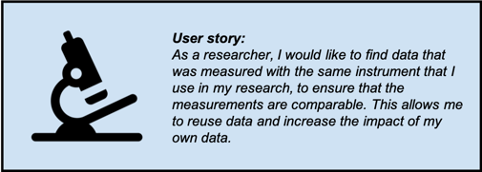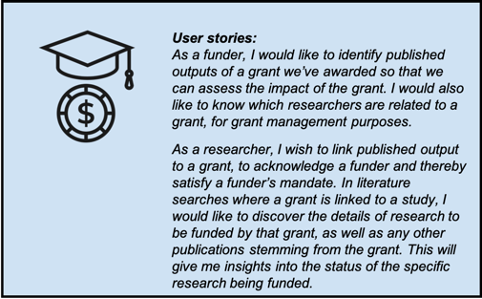Prototypes of new PIDs Services
FREYA has undertaken efforts to explore new PID types and prototype new services for existing PIDs. The project has conducted a survey on the PID landscape - which is described in Deliverable 3.1 Survey of Current PID Services Landscape - scanning existing PID types and identifying gaps. From these gaps, a subset of new PIDs and services was selected for which user stories were gathered - described in Deliverable 3.2 Requirements for Selected New PID Services. Four user stories were selected for which FREYA partners have developed prototypes: PIDs for organizations, PIDs for scientific instruments, PIDs for research facilities, and PIDs for grants.
The work on PIDs for organizations has focused on the development of the Research Organization registry which is described in more detail here.
PIDs for scientific instruments

This use case has been taken up by FREYA partner PANGAEA. PANGEA has started to include Handles for instruments (sensors and devices) in their dataset’s metadata. These Handles have been registered by scientists through the ‘Sensor Information System infrastructure’ initiated by the Alfred-Wegener Institute (AWI) in Germany. In the future, PANGAEA is planning to replace Handles with DOI registration thereby providing PIDs for instruments beyond an institutionally governed handle system.
PIDs for research facilities

PIDs for grants
FREYA prototype

Europe PMC, hosted by FREYA partner EMBL-EBI, partnered with Crossref, Wellcome, and PLOS to demonstrate the use of DOIs as persistent identifiers for grants. As Wellcome is a funder of Europe PMC, the grant data already existed on the Europe PMC site, so it was a question of working out the relationships between Wellcome, Europe PMC and Crossref to enable Europe PMC to assign DOIs to grants on Wellcome’s behalf. This allowsWellcome to have DOIs minted for all their grants. In this proof of principle pilot, the journal PLOS ONE coordinated with some Wellcome-funded authors to include newly registered DOIs in the metadata of the publication. This means that the readers can now seamlessly and accurately navigate from the article to the grant record and examine the support provided by Wellcome for this particular study. All of the grant-associated metadata, including newly minted DOIs, are freely available not only on Europe PMC’s web interfaces but also programmatically, through the public GRIST API. This service can be extended to any of the 31 Europe PMC funders in the future.
More information on prototypes for new PID resources?
A detailed description of the prototypes will bee made available in the FREYA Deliverable 3.3 Prototypes of New PID Resources. This deliverable also describes the work that was done on additional services for PIDs, namely PID registration using metadata in landing pages and workflows for enhanced provenance metadata for digital collections.